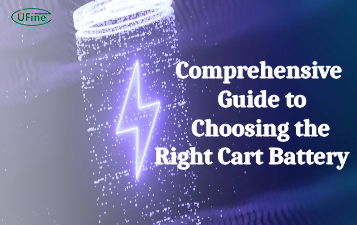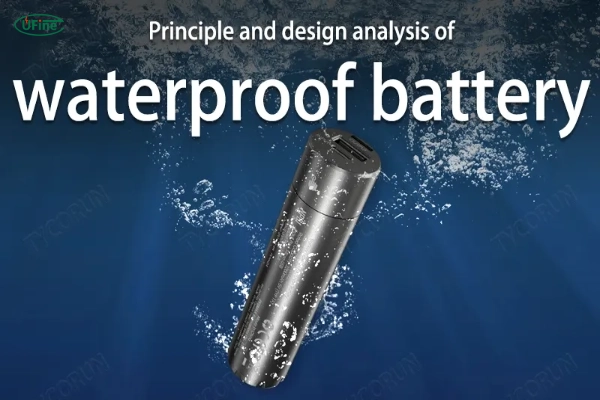Are you curious about waterproof batteries? In this guide, we’ll dive into waterproof battery technology. First, we’ll explore how these batteries are built to withstand water, detailing their construction and critical features. Then, we’ll uncover the advantages and various applications of waterproof batteries. Additionally, we’ll take a look at the different types available and offer tips on choosing the right one for your needs. So, let’s start.
Part 1. Waterproof battery technology
Waterproof battery technology refers to the design and engineering of batteries specifically crafted to resist water infiltration, ensuring reliable performance even in wet or damp conditions.
Construction
- Specialized Casing: Waterproof batteries are encased in materials like plastic or metal alloys, chosen for their resistance to corrosion and ability to repel water.
- Internal Sealing: Critical components inside the battery are tightly sealed to prevent water from seeping in, often using techniques like ultrasonic welding or adhesive bonding.
- Waterproof Coatings: Protective coatings are applied to the battery’s surface to create an additional barrier against moisture, enhancing its durability and longevity.
Waterproofing Techniques
Waterproofing techniques employed in battery manufacturing encompass a spectrum of methodologies, each meticulously tailored to enhance the battery’s ability to withstand water exposure. Sealing methods, such as ultrasonic welding or adhesive bonding, create impermeable barriers that fortify the battery’s internal structure against water ingress. Furthermore, specialized coatings, including nanotechnology-derived hydrophobic materials, are meticulously applied to the battery’s surface, augmenting its waterproofing capabilities and bolstering its resilience in adverse conditions.
Key Features
- Water Resistance: Waterproof batteries are designed to withstand immersion in water without damage, making them ideal for use in outdoor or marine environments.
- Durability: These batteries exhibit high durability, capable of withstanding harsh conditions such as exposure to water, dust, and extreme temperatures.
- Reliability: Waterproof batteries offer reliable performance even in challenging environments, ensuring continuous power supply for various applications.
- Longevity: Due to their robust construction and protective features, waterproof batteries typically have a longer lifespan than standard batteries.
Part 2. Advantages and applications of waterproof batteries
Advantages of waterproof batteries
- Reliable Performance: Waterproof batteries ensure consistent power delivery even in wet environments, making them dependable energy sources for devices used outdoors or in humid conditions.
- Enhanced Durability: Their ability to resist water ingress grants waterproof batteries exceptional durability, prolonging their lifespan and reducing the risk of damage from exposure to moisture.
- Versatility: Waterproof batteries find applications across diverse industries, including marine, outdoor recreation, and industrial sectors, due to their ability to withstand water exposure without compromising performance.
- Cost Savings: With their extended lifespan and reduced need for replacements, waterproof batteries offer cost savings over time, making them a practical choice for long-term use.
Applications of waterproof batteries
- Marine Electronics: Waterproof batteries power essential marine electronics such as navigation systems, depth finders, and boat motors, ensuring reliable operation even in wet and corrosive marine environments.
- Outdoor Recreation: From camping lanterns to hiking GPS devices, waterproof batteries are indispensable for outdoor enthusiasts, providing reliable power for gadgets used in rain, snow, or other adverse weather conditions.
- Industrial Equipment: In industrial settings where machinery operates in damp environments, waterproof batteries, power sensors, remote controls, and communication devices maintain productivity and safety.
- Emergency Preparedness: Waterproof batteries are vital components of emergency kits and devices such as flashlights, radios, and emergency beacons, ensuring reliable communication and illumination during emergencies, regardless of weather conditions.
Part 3. Types of waterproof batteries
When it comes to waterproof batteries, it’s essential to understand the specific types designed to withstand water exposure. Here are the most common ones:
1. Sealed Lead-Acid (SLA) Batteries
SLA batteries are sealed to prevent electrolyte leakage, making them resistant to water ingress. They are commonly used in marine applications, backup power systems, and outdoor equipment like electric scooters and golf carts.
2. Lithium Iron Phosphate (LiFePO4) Batteries
LiFePO4 batteries are inherently more stable and less prone to thermal runaway than other lithium-ion chemistries. They are often sealed and can withstand water exposure, making them suitable for outdoor and marine use, as well as in electric vehicles and solar energy storage systems.
3. Nickel-Metal Hydride (NiMH) Batteries with Waterproof Enclosures
While NiMH batteries themselves are not inherently waterproof, they can be housed in waterproof enclosures or casings, enhancing their water resistance. These batteries are commonly used in outdoor and marine applications where water exposure is a concern.
4. Zinc-Carbon and Alkaline Batteries with Waterproof Casings
Similarly, zinc-carbon and alkaline batteries can be equipped with waterproof casings or sleeves to protect them from water damage. These batteries are suitable for outdoor devices like flashlights, camping lanterns, and GPS units.
5. Customized Waterproof Battery Packs
Custom battery packs are sometimes designed with waterproof features, incorporating sealing techniques, waterproof coatings, and robust casing materials to ensure water resistance. These customized packs are often used in specialized applications such as underwater equipment, marine electronics, and outdoor power tools.
Part 4. Choosing the right waterproof battery
1. Determine Your Power Requirements
Firstly, assess the power requirements of your device or application. Consider factors such as voltage, current, and energy capacity to ensure the chosen battery can meet the demands of your equipment.
2. Understand Environmental Conditions
Next, evaluate the environmental conditions in which the battery will be used. Consider factors such as temperature range, exposure to water or moisture, and potential mechanical stresses to ensure the battery can withstand these conditions without compromising performance.
3. Choose the Right Chemistry
Select the battery chemistry that best suits your requirements and operating conditions. For example, lithium-based batteries offer high energy density and lightweight design, making them suitable for portable devices and outdoor applications. Lead-acid batteries, on the other hand, are more robust and durable, making them ideal for heavy-duty applications such as marine and industrial use.
4. Consider Size and Form Factor
Take into account the size and form factor of the battery to ensure compatibility with your device or equipment. Consider factors such as physical dimensions, weight, and mounting options to choose a battery that fits seamlessly into your system.
5. Assess Waterproofing Features
Evaluate the waterproofing features of the battery, including sealing techniques, casing materials, and IP (Ingress Protection) ratings. Look for batteries specifically designed to resist water ingress and meet the requirements of your application, whether it’s occasional exposure to moisture or prolonged immersion in water.
6. Verify Certification and Compliance
Check if the battery meets relevant industry standards and certifications for waterproofing and safety. Look for certifications such as IPX7 (submersion up to 1 meter for 30 minutes) or IPX8 (submersion beyond 1 meter) to ensure the battery’s waterproof performance aligns with your needs.
7. Consider Long-Term Costs
Finally, consider the long-term costs associated with the battery, including maintenance, replacement, and total cost of ownership. While upfront costs may vary, choosing a high-quality waterproof battery with a longer lifespan can result in cost savings over time by minimizing replacements and downtime.
Part 5. Final thoughts
So, to wrap it up, when it comes to choosing the correct waterproof battery, remember to think about things like how much power you need, where you’ll be using it, what type of battery works best, how big it is, how well it keeps water out, if it meets any safety standards, and how much it’ll cost you in the long run. Considering all these factors, you can ensure you get a battery that’s perfect for your needs and will keep your devices running smoothly, rain or shine.
Related Tags:
More Articles

Comprehensive Guide to Choosing the Right Cart Battery
Choosing the right cart battery ensures optimal performance and longevity. This guide covers cart battery types and helps you make an informed choice.
The Ultimate Guide to 18650 Button Top Battery
18650 button top batteries are popular for their high energy density and reliability. This guide covers their key features, usage, and maintenance tips.
The Power of Slim: Unveiling the Potential of Flat Lithium Ion Battery
Flat lithium-ion batteries power devices from phones to vehicles. This article explores their design, benefits, types, applications, charging, and safety.
The Comprehensive Guide to Battery Balancing and Battery Balancer
Battery balancing and balancers optimize performance, longevity, and safety. This guide covers techniques and tips for choosing the right balancer.
10 Key Facts About Drone Battery for 2024
Uncover crucial insights with "10 Key Facts About Drone Battery for 2024." Learn the latest trends and essential details on drone batteries.




